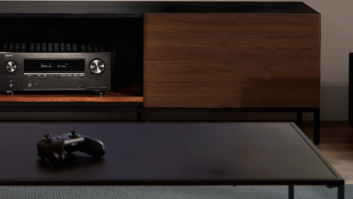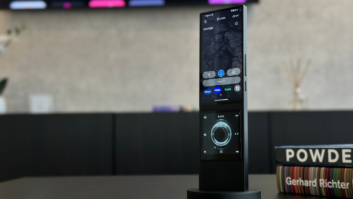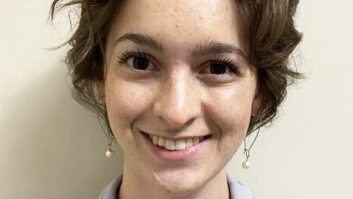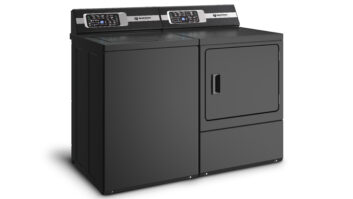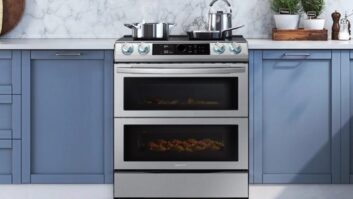The Denon and Boston Acoustics brands in the D&M Holdings stable launched new products and programs here during a dealer show, where executives promised that the benefits of multiple D&M restructuring initiatives will kick in during the second half.
The benefits include stepped-up dealer training, more dealer and consumer support, and newly aggressive marketing efforts, including a significant advance in the consumer and trade advertising presence of all D&M brands. Of the four largest D&M brands — Denon, Boston Acoustics, Marantz and McIntosh — only Boston Acoustics has had a visible advertising presence in recent years, said Bob Weissburg, D&M sales and marketing president. In fact, Denon hasn’t advertised in print publications in two years, he said, underscoring the significance of D&M’s planned multimillion-dollar second-half ad campaign. “We’ll spend more in 2006 than we did in the past two years,” said Weissburg.
D&M hopes to eventually boost its ad/public relations expenditures to 4 percent to 5 percent of sales to match the percentages spent by its peers, said Michael Angiletta, D&M’s strategic marketing VP. The focus of this year’s campaign will be to “reach new people” with specific products with specific benefits for specific applications, he said. The focus will mark a major change in advertising direction for Boston, he noted.
The ad campaign is the product of a D&M-wide strategic marketing group created last year to develop strategic programs for each brand based on what each brands’ executives want to accomplish, Angiletta explained. The group is also investing more in market research than the brands previously did, he said.
The group’s efforts will support a D&M-wide plan to boost average selling prices, Weissburg noted.
Meantime, D&M is continuing to build a consolidated training department for all brands, expanding the brands’ number of trainers to about 10 from seven, Weissburg said. A consolidated dealer and consumer support department for the Boston, Denon and Marantz brands is also nearing completion, he said.
The reorganizations are being accomplished without “homogenizing” the brands or blurring the brand’s unique positions, he stressed.
The changes will help D&M grow in 2006 to account for 10 percent of the combined dollar volume of industry sales of A/V receivers, HTiBs, component tuners, amplifiers and speakers across all distribution channels and for about 20 percent of all such products in the A/V specialty channel, he contended.
The company wants to acquire additional brands in the premium home-A/V market to complement its portfolio, possibly in display technology, he also said. “We’d like to be in the [flat-panel] display business someday, but this year is not the year,” Weissburg said, citing dramatic drops in average selling prices and an influx of suppliers. In its portfolio, D&M A/V brand Marantz is focusing mainly on front projectors, though it has some plasma displays, he said.
Further change was evident at Boston Acoustics, which has begun converting to a distributing-rep strategy to obtain more pure-custom accounts and plans to step up its presence at custom install trade shows.
The brand has also teamed up with a new industrial design company called Eleven to focus more on end-user solutions, including some that “might not be in our current [D&M] core categories,” said Boston Acoustics senior VP/general manager Eli Harary. The solutions might include some form of wireless technology, he added.
For Boston Acoustics, the current core categories have changed under D&M ownership, with the brand continuing to offer box and architectural speakers and small tabletop radios and CD radios. Boston dropped a small selection of A/V receivers and home theater systems developed as part of its pre-D&M diversification drive, and it dropped plans to develop a distributed audio system.
In other changes brought on by the new owner, Boston has implemented a new product development process to cut time to market by 50 percent, Harary said without specifying the number of months.
In new products, Boston launched a new flagship series. The E series of multiple-application speakers takes the brand further upscale at prices up to $2,500 each for a 6-foot floorstanding tower, which is the brand’s first four-way speaker. The series is not an open-distribution series, and it hasn’t been determined whether the E series will be sold through Boston’s newest account, Circuit City, said Phil Cohn, Boston’s sales and marketing senior VP.
Each of the E series models is sold individually because of an industrial design that allows them to be used as left or right speakers, surround speakers or center channels. They can be placed horizontally or vertically and mounted on a shelf, on an optional E-series stand, or on the wall. They feature extruded-aluminum cabinets with wood-veneer side panels that can be replaced with unfinished panels that can be stained to match any décor.
The five-SKU E series starts with the two-way $400 E40 with 1-inch tweeter and 4.5-inch woofer and includes $500, $600 and $800 models before jumping to the $2,500 E100 tower. Its $349-each floorstanding base is an option, as are wall brackets. Even the E100 can be placed horizontally for use as a center channel.
Boston’s next-most expensive tower is the VRM90 at $2,700/pair, and its next-most expensive bookshelf is the $1,000/pair VRM60.
Also new: the four-SKU XB series of powered subs from $279 to $679. They’re front-firing to be more flexible in placement.
D&M Q1 Results
(April-June 2006, in millions of dollars
1
, all business segments combined)








